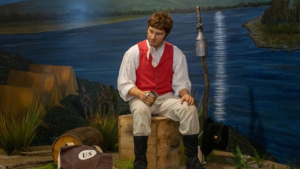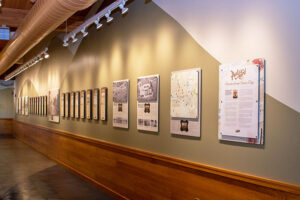Visit the Kids’ Corner
The Lewis and Clark Interpretive Center now has an interactive kids’ corner in the hallway that connects the Lewis and Clark side with the Betty…
Our permanent exhibits require care and feeding. If you’d like to help sponsor their continued maintenance, please consider donating to the Center.

The Lewis and Clark Interpretive Center now has an interactive kids’ corner in the hallway that connects the Lewis and Clark side with the Betty…

The Lewis and Clark Interpretive Center was recently featured on KTIV’s Hometown History segment. We are very appreciative of the attention and hope that this will inspire new visitors to enjoy our facilities and programs.

Thanks to retired Sioux City police officer Dave Bishop’s extensive postcard and cabinet photo collection, “Post Card: Stories from Sioux City” presents a unique view of Sioux City flood and communication history. Each image serves up a slice of history from the Missouri, Floyd, and Big Sioux rivers and Perry Creek. Each invites visitors to step into long-ago life in Sioux City neighborhoods that look far different today.

Presented to the Betty Strong Encounter Center on June 13, 2008, by shipmates of the USS LCS (L) (3) 92. The flag flew on their landing craft support vessel, known as a “Mighty Midget,” from 1944 to 1946. The gun boat provided anti-aircraft fire and cover for larger ships in the Pacific Theater.

“The Changing River” exhibit aims to inspire awareness of the Missouri River’s past, present and future and the technology and interests that try to control it. The 27-panel exhibit takes visitors from the “wild river” to the 2011 flood with dozens of stories and images in between. It illuminates the role of the river in the lives of Native peoples who were here long before Lewis & Clark and European-American settlers. It moves through the exploration and steamboat years, the coming of the railroads, subsequent efforts to create a navigational channel, and federal legislation to construct additional dams. The exhibit offers insight into the river’s role in agriculture, ecology and industry, including the Sioux City Stockyards.